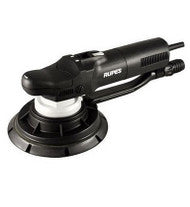What Sander Should I Use - Planetary Gear Driven Dual Action Sanders
Choosing The Best Sander - Planetary Gear Driven Dual Action Sanders
When choosing a sander there are a lot more factors to consider than brand and price. These include shape, size, power, orbital or random orbital, orbit size, variable speed, dust extraction but most importantly its intended purpose.
To help with choosing your sander I will break it down into several factors, the first being the shape or style of the sander. There are many shapes available including round, square, rectangular etc and they all serve different functions. Too often a sander is purchased based on the perceived benefit of that shape, rather than its practical application.
Today we take a closer look at Planetary Sanders
The high performance design of Planetary Sanders makes them the perfect choice for all heavy duty applications, whether it's stripping paint, removing gelcoats or just roughing and preparing a surface.
The name planetary comes from the dual movement it uses, both spinning around a central point (the Sun) and simultaneously rotating in smaller rotations off axis (the Planets).
Planetary Sanders work using a series of gears to produce a movement that rotates and orbits the backing plate holding the abrasive. Known as forced rotation, this movement guarantees exceptionally high torque, maximizing stock removal while still providing exceptional dust extraction.
Geared sanders are the perfect option for large surfaces, ideal for marine, automotive, industrial and cabinetry applications.
The Size
Available in 2 sizes,150mm (6") and 200mm (8"). This allows you to choose the base size that is closest to the size of the item you are sanding,.
The 200mm is a specialist trade sander with a limited range of abrasive choices, while the 150mm uses all common 150mm sanding discs, and has the widest range of abrasives available.
Always use the base size that is closest to the size of the item you are sanding, this will ensure maximum effect in the quickest time.
Power (Watts)
The more power the better!
To drive the gears and force the rotation - especially for coarse grits, a lot of power is required, so the more power the better.
Planetary sanders will always boast a minimum of 450W but usually more, the Rupes EK200AES has 550W of power.
Orbit
Planetary sanders will usually have a 5mm orbit, its effectiveness is magnified because of the geared rotary motion which provides maximum removal rates and a significant saving of time and energy.
Variable Speed
Available on some models like the Rupes EK150AES, the multifunction electronic modules feature speed regulation with torque control.
Pad Savers And Dust Extraction
Planetary sanders are designed to and should always be used with an active dust extraction system. There are multiple benefits of doing this including reducing labour and consumable costs, a much cleaner workspace, as well as better for you and the environment.
Tip: Pad savers are a sacrificial pad that extends the life of the main backing pad and far cheaper than replacing backing pads.
Advantages Of A Planetary Sander
Powerful, aggressive and exceptionally efficient when used for sanding large surfaces.
The combination of rotary and planetary motion allows surfaces to be prepared for finishing quickly and quietly without overheating or excessive surface aggression.
Disadvantages Of A Planetary Sander
The natural design of planetary sanders makes them heavy and not designed for everyday general sanding. The 200mm sander has a limited abrasive range which is more expensive and harder to source.
Click Here To See Our Range of Planetary Sanders
Happy Sanding!
If you have any questions please get in touch Ask Matt
*Originally Posted by Matt Piggin on 17th July 2023

